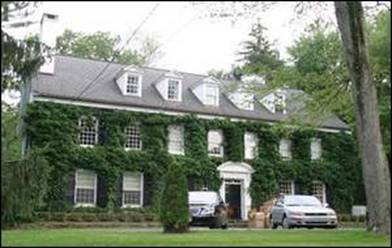Contrarian or Without Portfolio?
Does the difference in spending per student seem unfair when you consider the residents in one town pay 91 percent of the cost of their schools through property taxes and the other town pays only 13 percent?
The residents of the town with the greater average household income pay a higher average state income tax than the people in the town with a lower average income. The state income tax is used to reduce school taxes which greatly benefits one town more than the other. Does spending 20 percent more per student seem unfair given how much more one town’s residents pay in taxes than the other?
It seems more than fair to us. Plainfield is the town with the lower average income, higher spending per student and extremely low reliance on property taxes for school funding. The other town is Scotch Plains. We thought it would be helpful if you had a few facts before reading the rest of this post.
Yesterday we wrote about Governor Jon Corzine calling for the consolidation of the state’s school districts by county. “The Contrarian” on Blue Jersey has excitedly picked up on the idea:
While the Gov is touting the obvious cost savings of such a measure, a bonus benefit would be that it would promote increased diversity in the 21 county school districts, although he did not get into specifics.Supposedly the purpose of school consolidation is to reduce property taxes, but we have long since debunked the “cost savings” myth, as have the experts testifying before property tax reform committees in Trenton. If the experts had said otherwise or if lawmakers could point to consolidation success stories the Gov would have provided a few “specifics:” That’s why the objective for consolidation has been expanded to include achieving “diversity”.
As we explained yesterday, the real purpose for school consolidation is to give Democrats control over $20 billion in property taxes and 21 patronage mills. But, the Contrarian wants readers to buy into the diversity angle:
New Jersey is insanely segregated by race and class. Most often, municipal boundaries are the dividing line between a future of hope and expanding horizons for young people or one of little opportunities. In my home county, just stroll from poor, crime-ridden Plainfield into tony Scotch Plains next door, a distance of only a few hundred yards. Compare housing values and school performance data.What nonsense. The racial makeup of “tony” Scotch Plains is nearly identical to the state of New Jersey. But what difference should it make if more Asians or Native Americans live in the town as compared to the desired diversity template? It has nothing whatever to do with lowering property taxes.
While I don't think that the Governor's plan (if enacted) will destroy neighborhood schools, it may make school administrators more serious about designing relevant curricula and other policies if their students hailed from a broader spectrum of households. It would also benefit students from all social, ethnic and economic groups who will be exposed to peers who aren't just like them. Third, making rich people sweat from time to time is probably a good thing.
People who earn more money often live in more expensive houses than those who make less. This is hardly an insane concept or unique to New Jersey. The Contrarian may want to ask Linda Stender, a resident of Scotch Plains and a frequent poster on Blue Jersey, if her neighbors work hard to make a living or if they sit around eating bon-bons waiting for their trust fund checks to arrive.
Opportunity is there for kids in both towns, but it’s up to the students, with encouragement from their parents, to take advantage of the most expensive education in the United States. And if Plainfield school administrators are lousy or not sufficiently “serious about designing relevant curricula and other policies” - fire the administrators, because we are giving them more funding per child than Scotch Plains. If the teachers are lousy, fire them, because we are paying Plainfield teachers more than the teachers in Scotch Plains. But don’t give us this baloney that administrators, teachers or students are going to improve by waving the county school consolidation wand.
For Governor Jon Corzine and others in the Democrat Party, county school consolidation isn’t about saving money or diversity, it’s about grabbing additional power and tax revenue. For the Contrarian it’s probably about envy and spite. What else are we to make of his final comment on the subject – “Third, making rich people sweat from time to time is probably a good thing.” Well, at least we finally found out the “progressive” definition of rich – a household income of $81,599. Which only goes to show the Contrarian doesn’t “stroll from poor, crime-ridden Plainfield into tony Scotch Plains” or vice versa very often, if ever.
Plainfield has a number of well known residents, including one former Governor of New Jersey. Earlier this year Jim McGreevey purchased a 17-room, $1.4 million “palatial home” in the Union County city. The “ivy-covered Georgian Colonial” boasts eight bedrooms, five fireplaces, four bathrooms, a solarium, butler's pantry and in-ground swimming pool.
McGreevey’s Plainfield home, situated on 1.7 acres, was originally built for a founder of the New York Stock Exchange. Its gardens were designed by the firm of noted landscape architect Frederick Law Olmsted, who created Central Park. Here’s a picture:




2 Comments:
Your last two posts have been outstanding. Keep it up. Until the State attacks the abbott spending there will be no real property tax reform.
events in vancouver
closet design
toronto plumbing
fall fashion 2011
salsa recipe
furniture stores long island
vacation rental by owner
hotels downtown vancouver
medical terminology
things to see in chicago
dwarf trees
without
Post a Comment
<< Home